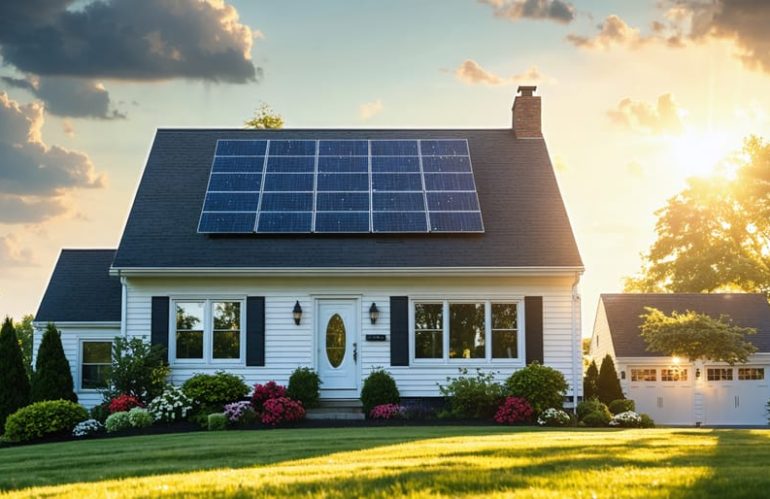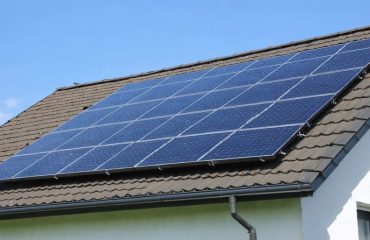Transform your home into a clean energy powerhouse with JCP&L’s innovative solar program, designed specifically for New Jersey homeowners seeking to slash their electricity bills and embrace sustainable living. This comprehensive initiative combines generous financial incentives, streamlined installation processes, and ongoing support to make solar energy accessible and affordable for Jersey Central Power & Light customers.
Through partnerships with certified local installers and flexible financing options, JCP&L’s solar program helps homeowners navigate the transition to solar power while maximizing their return on investment. Participants can expect significant reductions in their monthly energy costs, valuable tax incentives, and the satisfaction of contributing to New Jersey’s renewable energy goals. Whether you’re motivated by environmental concerns or looking to secure long-term energy savings, JCP&L’s solar program offers a clear path to harness the sun’s power for your home’s energy needs.
Note: This introduction directly addresses homeowner interests in solar benefits and program accessibility while maintaining an optimistic, informative tone suitable for the target audience.
Understanding the JCP&L Solar Program
Program Eligibility
To qualify for JCP&L’s solar program, homeowners must meet several straightforward requirements. First, you must be a current JCP&L customer in good standing with an active residential account. Your home should have a roof that’s in good condition and receives adequate sunlight, typically with southern exposure being ideal.
The property must be owner-occupied, and you’ll need to have sufficient space on your roof or property to accommodate the solar panel system. A minimum credit score of 650 is typically required if you’re planning to finance the installation. Your home’s electrical system should also be up to current codes and capable of supporting a solar installation.
Annual electricity usage is another consideration – homes that consume at least 6,000 kWh per year are generally considered good candidates. Additionally, your roof should have a remaining life expectancy of at least 10 years, as removing and reinstalling panels for roof repairs can be costly.
Before approval, JCP&L will conduct a site assessment to verify these requirements and ensure your property is suitable for solar installation.
Application Process
Applying for JCP&L’s solar program is straightforward and can be completed in a few simple steps. First, check your eligibility by ensuring you’re a JCP&L customer with a suitable roof space and good credit standing. Next, submit an online application through JCP&L’s customer portal or contact their solar team directly.
After submitting your application, a solar consultant will review your property’s solar potential using satellite imagery and your energy usage history. You’ll receive a customized proposal detailing system size, estimated costs, and potential savings within 5-7 business days.
If you decide to proceed, you’ll need to provide documentation including proof of ownership, recent electric bills, and income verification if applying for income-based incentives. Once approved, JCP&L will connect you with certified solar installers in their network.
The final step involves scheduling a property inspection and signing the necessary agreements. Most applications are processed within 2-4 weeks, and installation can begin shortly after approval. JCP&L’s team will guide you through each step, ensuring a smooth transition to solar power.
Financial Benefits and Incentives
Available Rebates
JCP&L customers can access several valuable rebates through their solar program, making the transition to solar energy more affordable. Currently, the most significant incentive is the federal Solar Investment Tax Credit (ITC), which allows homeowners to deduct 30% of their solar installation costs from their federal taxes. Additionally, New Jersey residents can benefit from the state’s New Jersey solar incentives, including the Successor Solar Incentive (SuSI) Program.
Through the SuSI program, homeowners earn fixed incentives for every kilowatt-hour their solar system generates. JCP&L customers can also take advantage of net metering, which credits their account for excess energy produced by their solar panels. To claim these rebates, homeowners should work with their solar installer to complete the necessary paperwork and submit it to both JCP&L and the state’s Clean Energy Program.
The utility company also offers seasonal promotions and additional incentives throughout the year. To maximize your savings, consider scheduling a free consultation with a certified JCP&L solar installer who can help identify all available rebates and guide you through the application process.
Long-term Savings
The JCP&L solar program offers substantial long-term savings potential for homeowners. On average, participants can expect to reduce their monthly electricity bills by 20-30% immediately after installation. Over the system’s 25-30 year lifespan, these savings typically amount to $20,000-$30,000, depending on energy consumption patterns and system size.
The program’s financial benefits extend beyond direct energy savings. New Jersey’s net metering policy allows homeowners to earn credits for excess power generated, effectively reducing bills further during high-production months. Additionally, property values typically increase by 3-4% with solar installation, providing another layer of financial benefit.
Most homeowners achieve complete return on investment (ROI) within 5-7 years through combined savings from reduced energy bills, Solar Renewable Energy Credits (SRECs), and available tax incentives. The federal solar tax credit currently offers a 30% deduction on installation costs, making the initial investment more manageable.
When factoring in rising electricity costs, which historically increase by about 2.2% annually in New Jersey, the long-term savings become even more significant. The fixed cost of solar installation today protects against future utility rate increases, ensuring predictable energy expenses for decades to come.
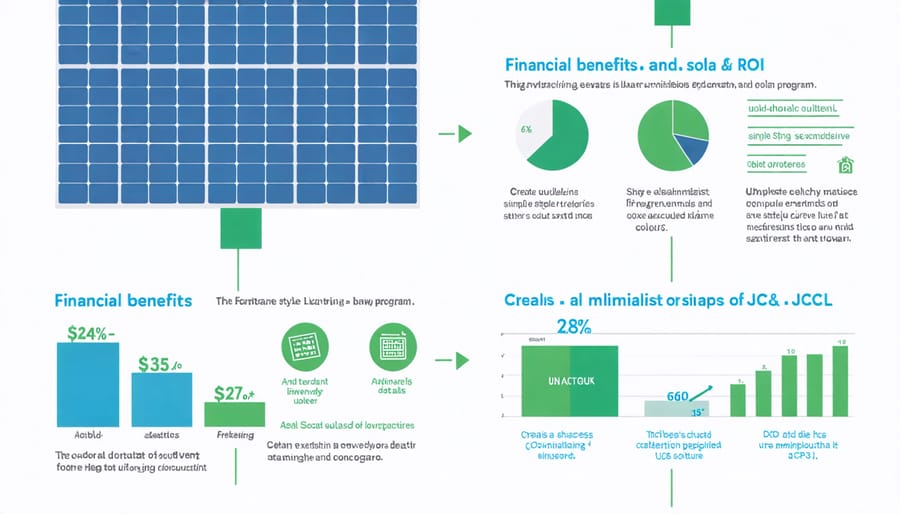
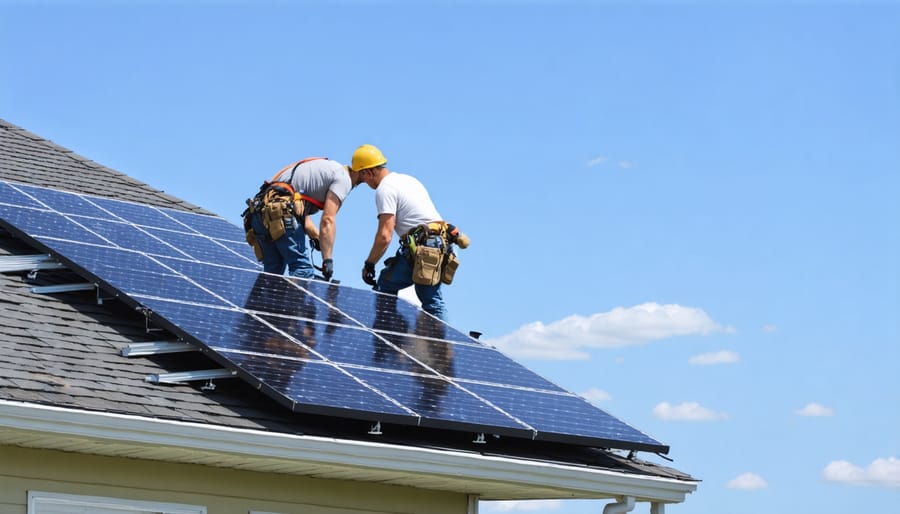
Solar Panel Installation Process
Home Assessment
During your home assessment, a certified JCP&L solar consultant will visit your property to evaluate its solar potential. This comprehensive evaluation typically takes 60-90 minutes and is crucial for designing the perfect solar system for your home. The consultant will examine your roof’s condition, orientation, and shading from nearby trees or structures.
They’ll also review your past electricity bills to understand your energy consumption patterns and recommend an appropriately sized system. Using specialized tools, they’ll measure your roof’s dimensions and assess its structural integrity to ensure it can support solar panels.
During this visit, you’ll have the opportunity to discuss your energy goals, ask questions about the program, and learn about potential savings. The consultant will explain available financing options, tax incentives, and JCP&L’s net metering benefits. They’ll also provide a preliminary estimate of system size, costs, and expected energy production.
By the end of the assessment, you’ll receive a detailed proposal outlining your customized solar solution and projected financial benefits.
Installation Timeline
The JCP&L solar installation process typically takes 2-3 months from initial application to system activation. The timeline begins with a free home assessment, which is usually completed within a week of your application. Following approval, the design phase takes approximately 2-3 weeks, during which engineers create a customized solar system plan for your home.
Once designs are finalized, permit applications are submitted to your local municipality, taking roughly 2-4 weeks for approval. The actual installation is one of the quickest parts of the process, usually completed in 1-2 days for most residential systems. After installation, your system undergoes a municipal inspection and requires final utility approval.
The final step is interconnection with the power grid, which typically takes 1-2 weeks after passing inspection. JCP&L will install a new bi-directional meter to track both your energy consumption and production. Throughout this process, your dedicated project manager keeps you informed of progress and handles all necessary paperwork and coordination with various parties involved.
Program Success Stories
The JCP&L solar program has transformed the lives of numerous New Jersey homeowners, delivering both environmental and financial benefits. Take the Smith family from Morristown, who installed their solar system in 2021. Within the first year, they saw their monthly electricity bills drop by 85%, saving over $2,400 annually. Their 8.5kW system not only powers their home but also generates excess energy that earns them credits through net metering.
In Toms River, retired couple John and Mary Rodriguez invested in solar panels through the program in 2020. Despite initial hesitation about upfront costs, they utilized the program’s financing options and tax incentives. Their investment paid for itself in just four years, and they now enjoy nearly zero-cost electricity while contributing to a greener New Jersey.
Small business owner Sarah Chen from Edison demonstrates how the program works for both residential and commercial properties. Her home solar installation inspired her to add panels to her retail store, resulting in combined annual savings of over $5,000. She particularly appreciates the program’s streamlined approval process and professional installation support.
The Martinez family in Princeton represents a growing trend of young homeowners embracing solar energy. Their 6kW system, installed in 2022, has already prevented 4.5 tons of carbon emissions while providing reliable power during grid outages thanks to their battery backup system. They’ve become solar advocates in their community, inspiring five neighboring families to join the program.
These success stories highlight how JCP&L’s solar program makes sustainable energy accessible and financially beneficial for diverse New Jersey residents.
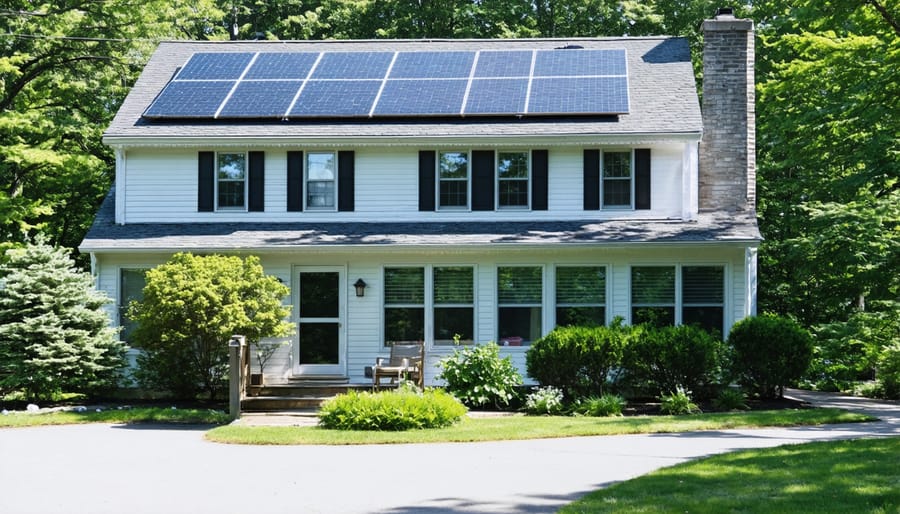
JCP&L’s solar program offers a clear path to sustainable energy and significant cost savings for New Jersey homeowners. By participating in this program, you can reduce your monthly electricity bills while contributing to a cleaner environment. The combination of federal tax incentives, state rebates, and net metering benefits makes solar installation more affordable than ever before.
Taking the next step is straightforward. Begin by reviewing your energy consumption and confirming your eligibility through JCP&L’s website. Then, schedule a free consultation with an approved solar installer who will assess your home’s solar potential and provide a customized proposal. Remember to gather multiple quotes to ensure you’re getting the best value for your investment.
The transition to solar power is a smart long-term investment that pays dividends in both environmental impact and financial returns. With JCP&L’s support and guidance throughout the process, you can join thousands of New Jersey residents who are already enjoying the benefits of clean, renewable energy. Don’t wait to start your solar journey – contact JCP&L today to learn how you can power your home with the sun.

